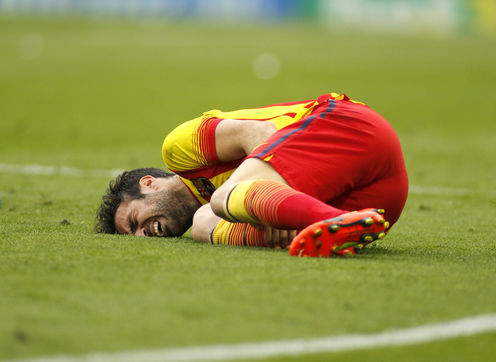The old saying goes that money makes the world go round and this is no different for the world of football, in fact it probably has more truth to it. Despite the obvious glory and prestige that comes with winning games and competitions, prize money is at the root of having a competitive football team. Add on the extra incentives of television money, sponsorship deals and endorsements, there is definitely a lot to gain in having a top class football team.
Perhaps this is why the world’s top teams can justify splashing out hundreds of millions on a single player’s transfer fee, then further tens of millions on top of that on their wages. Spanish giants Real Madrid have always been a team that enjoy splashing out massive sums on players that they class as ‘Galacticos’ and have broken the world transfer record 3 times since the start of the millennium with their purchases of Zinedine Zidane, Cristiano Ronaldo and Gareth Bale, with the latter costing a reported £85 million. But, what happens when these players get injured?
You would have to assume that any football team with any sense of business and caution would have insurance on their players; however these payouts would only become valid if the player had to cease playing due to an injury sustained in a game or in training. What happens when they are just sitting on the sidelines, idly watching on?
Take Gareth Bale for example, not long after his world record move to the Spanish capital, he spent a prolonged period on the physio’s table with a back injury. Rumours came out that the injury was an existing one from his time at Tottenham, but the club quashed these as such, rumours. While modern day training regimes are designed to build players to their physical peak, they also present many opportunities for the players in questions to pick up new, aggravating injuries. This is on top of the fact that just everyday life can take its toll on your back. The point being here is that, whether it was an existing injury or something picked up during his career with Real Madrid, their £85 million man wasn’t playing games. In fact, in the first half season of Bale’s Real Madrid career, he only played 5 full games. He spent the rest of the games either as a not-fully-fit substitute or missing them completely.
Now, what is the point in shelling out £85 million for one player, when they can break so easily? (Note, I am not saying Bale is injury prone, I am just pointing out how easy it is for a player to be injured.) Bale is earning a reported £300k per week at Madrid and as previously mentioned he missed at least 5 games during the first half of the season – that’s £1.5 million paid out to a player who has done literally nothing for them during these games. Additionally, the fact that Bale is obviously a world class player has to be taken into account. What if this footballing giant had been fully fit and playing in every game? During the period in question, Bale was substituted early in a loss against title rivals Barcelona; substituted early again in a draw with Juventus in the Champions League and didn’t even manage to make the bench for the loss against bitter foes Atletico Madrid. How would these games have panned out if the Welshman wasn’t injured? It can’t be said for sure, but what can be safely assumed is that a fully fit Gareth Bale would not have hindered their chances of winning. That being said, Real Madrid did go on to win the Champions League with help from Bale, but at the same time they finished 3rd in the league, their lowest position in 10 years, and had to watch arch rivals Atletico Madrid being crowned champions.
Bale is just one of a number of players who have commanded large transfer fees and large pay cheques, all the while costing their clubs money by spending most of their stay there on the treatment table. Here is a list of some of the more high profile, and high costing ‘sicknotes’:
| Name | Club | Transfer Fee | Total Salary | Games played | Cost per game | Goals Scored | Cost per goal |
| Alberto Aquilani | Liverpool | £17,000,000 | £6,000,000 | 18 | £1,277,778 | 1 | £23,000,000 |
| Kaka | Real Madrid | £54,200,000 | £29,328,000 | 85 | £982,682 | 23 | £3,631,652 |
| Kieron Dyer | West Ham | £6,000,000 | £17,264,000 | 30 | £775,467 | 0 | n/a |
| Michael Owen | Newcastle | £16,000,000 | £23,920,000 | 71 | £562,254 | 26 | £1,535,385 |
| Ronaldo | Inter Milan | £16,750,000 | £15,500,000 | 68 | £474,265 | 49 | £658,163 |
When you take into consideration what these clubs are actually paying their players on top of the transfer fee paid for them, the results are quite shocking. While Ronaldo might have been arguably a prolific goalscorer for Inter Milan, each one of those goals cost the club £658,163. Alberto Aquilani is just on a completely different level though costing over £1.2 million per matched played for Liverpool, and one really, really expensive goal.
Injuries are always going to be a part of football; they’ll always be a part of any sport. But when you look at the figures presented in the table above, is it really worth splashing out millions and millions of pounds on these players if this is the type of return you are getting? Real Madrid may be getting their monies worth for Gareth Bale now, but for a while that wasn’t looking likely.
The clubs who are spending this kind of money obviously have their reasons for doing so, but for the sake of the clubs, the players and the game as a whole, hopefully there are no more instances such as the above.
I’m Chris and I write about all things financial within the world of football and sports. I also like to give out money saving advice where I can and you can find me over at Spend It Like Beckham.





